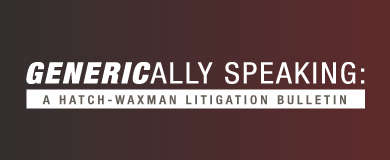- Acumen Powered by Robins Kaplan LLP®
- Affirmative Recovery
- American Indian Law and Policy
- Antitrust and Trade Regulation
- Appellate Advocacy and Guidance
- Business Litigation
- Civil Rights and Police Misconduct
- Class Action Litigation
- Commercial/Project Finance and Real Estate
- Corporate Governance and Special Situations
- Corporate Restructuring and Bankruptcy
- Domestic and International Arbitration
- Entertainment and Media Litigation
- Health Care Litigation
- Insurance and Catastrophic Loss
- Intellectual Property and Technology Litigation
- Mass Tort Attorneys
- Medical Malpractice Attorneys
- Personal Injury Attorneys
- Telecommunications Litigation and Arbitration
- Wealth Planning, Administration, and Fiduciary Disputes
Acumen Powered by Robins Kaplan LLP®
Ediscovery, Applied Science and Economics, and Litigation Support Solutions
-
April 15, 2024Robins Kaplan Named to 2024 BTI Client Service A-Team
-
April 9, 2024Robins Kaplan LLP Files Complaint Against Social Media Giants Meta, Snap, TikTok on Behalf of Spirit Lake Nation, Menominee Indian Tribe of Wisconsin
-
April 8, 2024Tara Sutton, Emily Tremblay Shortlisted for Euromoney’s Women in Business Law Awards
-
April 24, 2024IP Leadership Executive Summit
-
April 24, 2024IP Odyssey: Navigating the Latest Developments in Intellectual Property Law
-
April 30, 2024Navigating Generational Dynamics
-
March 2024e-Commerce: Pitfalls and Protections
-
March 22, 2024‘In re Cellect’:
-
March 14, 2024How Many Cases Have You Tried to a Verdict?
-
September 16, 2022Uber Company Systems Compromised by Widespread Cyber Hack
-
September 15, 2022US Averts Rail Workers Strike With Last-Minute Tentative Deal
-
September 14, 2022Hotter-Than-Expected August Inflation Prompts Massive Wall Street Selloff
Find additional firm contact information for press inquiries.
Find resources to help navigate legal and business complexities.
Bayer Schering Pharma AG v. Watson Pharma.
April 09, 2012

Drug Product and Patent(s)-in-Suit: Yaz® (drospirenone/ethinyl estradiol); U.S. Reissue Pat. No. 37,564 ("the '564 patent"); U.S. Reissue Pat. No. 37,838 ("the '838 patent")
Nature of the Case and Issue(s) Presented: This case was initially filed on November 5, 2007. On June 28, 2010, plaintiff Bayer filed a motion for summary judgment of infringement of the patents-in-suit. In response, defendants stipulated to infringement of the '564 patent, but disputed infringement of the '838 patent. The Court denied Bayer's motion as to the '838 patent. The parties subsequently settled their claims related to the '838 patent, but the validity of the '564 patent remained in dispute. Bayer filed a motion for summary judgment that the '564 patent was not obvious, and defendants filed a motion for summary judgment that it was. The Court ruled in favor of Bayer and upheld the '564 patent's validity.
Why Bayer Prevailed: Defendant contended that the '564 patent was invalid for the following reasons: (i) the claim combination of drospirenone and ethinyl estradiol for oral contraception, at the claimed doses, was per se conventional as of December 1993; (ii) the prior art taught specifically the 23/5 and 24/4 dosing regimen claimed in the patent; and (iii) there was a clear motivation to combine the teachings of the cited prior art to arrive at the subject matter claimed in the '564 patent.
The Court, however, found that the prior art taught away from the invention claimed in the '564 patent. One prior art reference, the 1987 Guillebaud article, taught that the 21/7 regimen for administering combined oral contraceptives was superior, highlighting the advantages arising from the seven-day pill-free interval. On the other hand, Guillebaud taught a person skilled in the art that if deviation from the traditional regimen was necessary, the best solution was to eliminate the pill-free interval entirely. The '564 patent instead shortens the pill-free interval. But Guillebaud recommends the shortened pill-free interval only in extreme cases. Another reference, Landgren 1991, explicitly rejected Bayer's 23/5 regimen. Landgren concluded that reducing the pill-free interval to five days would result in negligible gains in "safety." Lastly, a person of ordinary skill in the art in 1993 would have known that there were already two low-dose combined oral contraceptives on the market using 21/7 monthly regimens - Mercilon and Loestrin. Both products had been widely studied and approved as safe and effective for the prevention of pregnancy. That widespread knowledge taught away from the claimed invention and removed motivation to develop different dosing regimens like the ones claimed in the '564 patent because it would not justify exposing women to a higher monthly dose of synthetic hormones.
The Court next found that defendants improperly analyzed individual claim elements-namely, the 23- and 24-day dosing regimens-in isolation rather than in the context of the claimed invention as a whole. "While the cited references and snippets from [defendants'] expert report provide a hindsight roadmap to find obviousness, structuring the prior art in order to modify and reconstruct the invention is impermissible."
Finally, the Court relied on secondary indicia of non-obviousness as further support that the claims of the '564 patent were valid. Three unexpected results associated with Bayer's claimed invention include (i) a 23/5-day regimen provides substantially greater ovarian suppression than a 21/7-day regimen even when the 21/7-day regimen contains a higher dose of ethinyl estradiol; (ii) even in missed-pill situations a 24/4-day regimen provides greater protection than the same preparations in a 21/7-day regimen; and (iii) even in real-world use, a 24/4-day product has superior efficacy to a 21/7-day product. The Court also relied on evidence of industry praise for the invention and copying as further proof of non-obviousness.
Related Publications
Related News
If you are interested in having us represent you, you should call us so we can determine whether the matter is one for which we are willing or able to accept professional responsibility. We will not make this determination by e-mail communication. The telephone numbers and addresses for our offices are listed on this page. We reserve the right to decline any representation. We may be required to decline representation if it would create a conflict of interest with our other clients.
By accepting these terms, you are confirming that you have read and understood this important notice.
